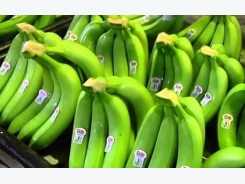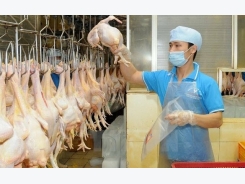Cashew industry faces volatile weather, pests

The Crop Production Department held a seminar in HCM City last Saturday to discuss measures to develop the cashew sector in a sustainable manner. — VNS Photo
Ho Chi Minh City — The cashew industry has achieved impressive growth in the past years with increasing exports, but unfavourable weather due to the impact of climate change and an increase of diseases and pests threaten its continued development, delegates told a seminar in HCM City last Saturday.
Lê Văn Đức, deputy director of the Crop Production Department, said Việt Nam’s average cashew output last year was 10.8 quintals per hectare, a reduction of 16.67 per cent from 2015 due to lower rainfall than the previous year, which caused severe drought at the blossom period of cashew trees.
This year, average output reduced further to only 7.55 quintals per ha, mainly due to unseasonal rains occurring at the blossom period of the trees, he said.
“Unseasonal rains had seriously affected the pollination of the trees and at the same time created ideal conditions for diseases, such as colletotrichum gloeosporioides and pests such as helopeltis theivora, to develop on young buds and fruits, affecting the trees’ productivity and quality,” he said.
In Bình Phước Province, the country’s largest cashew cultivation area, its productivity in 82,893 ha out of a total of 173,920 ha under cashew cultivation fell this year mainly due to insects.
Lê Thị Ánh Tuyết, director of the Agriculture Extension Centre of Bình Phước Province, said since last month the province has established technical teams to help farmers, especially the poor and ethnic minority, in the six main cashew cultivation districts to control pests, as well as instruct them to identify diseases and pests on cashew.
“The move aims to limit a further productivity drop in the next crop, but if it continues raining, it will be hard to combat the insects,” she said.
Similarly, Nguyễn Thị Tuyết from the Lâm Đồng Department of Agriculture and Rural Development said the province has 29,688 ha under cashew cultivation, with average productivity at only 2.8 quintals per ha this year compared to 8.8 quintals per ha last year.
Tuyết said 90 per cent of the province’s cashew cultivation area was affected by insects, while 27,834 ha was infected by colletotrichum gloeosporioides disease, causing the province’s total productivity to fall by 62.8 per cent from last year.
The diseases have gotten under control now and the trees are in the process of recovery, she said.
At the seminar, representatives from other provinces, including Đồng Nai and Bình Thuận, also reported the current situation of cashew farming in their localities as well as suggested measures to recover disease-infected cashew farms.
Đức said aged cashew trees and a lack of investment in nurturing new trees were among other reasons that led to low productivity, and the local cashew industry planned to replant 45,000 ha and transplant 15,000 ha of cashew farms in Bình Phước, Đồng Nai, Bà Rịa-Vũng Tàu, Gia Lai and Bình Định by 2020.
The sector also plans to enhance intensive farming in the coming years since “reality proved that applying intensive farming techniques will push up cashew productivity by 24-63 per cent, and at the same time, help cashew farms adapt to climate change as well as limit the impact of unseasonal rains.”
Tuyết of Lâm Đồng Province said the province has set a target to replant or transplant 8,880 ha of cashew trees by 2020 in an effort to raise the province’s average cashew productivity to 12 quintals per ha by then.
She, as well as other delegates, suggested that the Ministry of Agriculture and Rural Development direct research institutes and centres to develop new seedlings that have high productivity and quality and are resistant to diseases and adaptive to climate changes.
The agricultural sector needed to re-evaluate the efficiency of cashew transplanting models to make a suitable recommendation for localities (expanding the model or temporarily stopping it to shift the focus to replanting new trees), she said.
Localities also suggested the Crop Production Department come up with a cashew farming technique package that is suitable to the current situation of climate change.
Many cashew farmers also shared their farming experiences that helped them secure productivity amid unfavourable weather and diseases.
At the seminar, 89 cashew farmers in Bình Phước, Đồng Nai, Lâm Đồng, Bình Thuận and Bà Rịa-Vũng Tàu were awarded certificates of merits for their outstanding achievement in cashew production by the Việt Nam Cashew Association.
Việt Nam has 301,738 ha under cashew cultivation this year, yielding 241,363 tonnes, a reduction of 94,906 tonnes over last year.
Related news
Tools

Phối trộn thức ăn chăn nuôi

Pha dung dịch thủy canh

Định mức cho tôm ăn

Phối trộn phân bón NPK

Xác định tỷ lệ tôm sống

Chuyển đổi đơn vị phân bón

Xác định công suất sục khí

Chuyển đổi đơn vị tôm

Tính diện tích nhà kính

Tính thể tích ao




 Son La coffee geographical indication announced
Son La coffee geographical indication announced  Opening door for export of livestock products
Opening door for export of livestock products